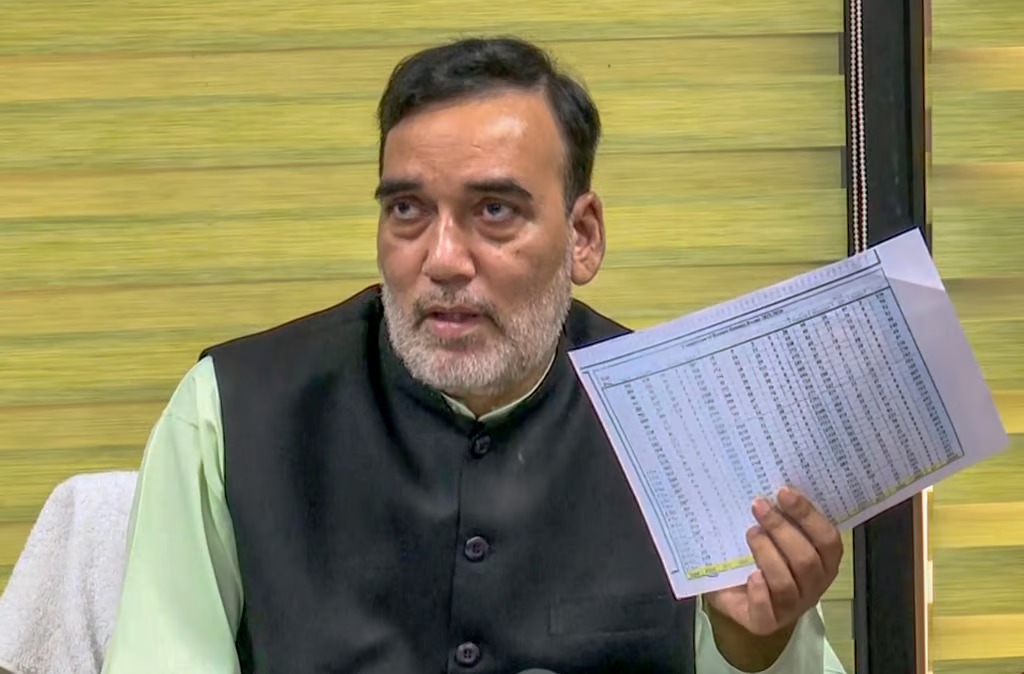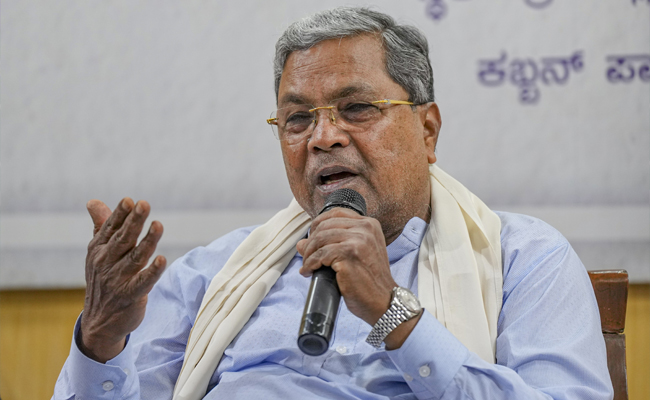New Delhi(PTI): Delhi Environment Minister Gopal Rai said he has written to Union Environment Minister Bhupender Yadav four times, seeking urgent clearances for cloud seeding to artificially induce rain that could help combat the escalating pollution crisis in the national capital.
Amid Delhi’s worsening air quality, which has plunged into the “severe plus” category with an AQI consistently above 450, Environment Minister Gopal Rai on Tuesday called for immediate intervention from the central government.
“Despite repeated requests through letters on August 30, October 10, and October 23, the Union Environment Minister has not taken cognisance of the situation or responded to the Delhi government’s appeals," Rai said in his latest letter.
Rai said while the GRAP-IV restrictions are being enforced to tackle the alarming levels of pollution, the thick smog layer engulfing the city can only be broken by wind or rain.
He said artificial rain, facilitated through cloud seeding, is a viable emergency measure that the Delhi government is ready to fund but cannot proceed without clearances from key central agencies such as the Directorate General of Civil Aviation (DGCA), Ministry of Home Affairs (MHA) and the Ministry of Defence.
“Delhi cannot get relief from pollution unless we break the smog layer. Cloud seeding can help mitigate the crisis and provide immediate relief to citizens,” Rai said.
The Delhi government collaborated with IIT Kanpur last year to explore cloud seeding as an emergency pollution control measure.
However, it faced procedural hurdles with regard to clearances from central authorities.
Emphasising the urgency of the current situation, Rai said in his letter, “I request the Union Environment Minister to convene an emergency meeting with all stakeholders, including IIT Kanpur and relevant central agencies, to fast-track the clearances required for artificial rain.”
Earlier during a press briefing, Rai alleged that the BJP-led central government is deliberately ignoring the health crisis in north India, adding that “its apathy is both disheartening and disturbing.”
Rai also criticised the Union Environment Minister, stating, “Maybe if I had written to the environment minister of another nation, they would have responded sooner than our own government.”
Let the Truth be known. If you read VB and like VB, please be a VB Supporter and Help us deliver the Truth to one and all.
Seattle: In a significant shift in the social media landscape, hundreds of thousands of users have reportedly left Elon Musk’s X (formerly Twitter) in the past week, with over a million new users joining the rival platform Bluesky. The mass migration follows the results of the recent U.S. elections, with many citing increasing concerns over hate speech, misinformation, and the growing influence of Musk’s political affiliations on the platform.
Users have been gradually leaving the microblogging platform for several months, but this exodus appears to have accelerated in the wake of Musk’s ownership and his public support for U.S. President-elect Donald Trump. Critics argue that under Musk's leadership, X has evolved from a platform for open discourse to one that amplifies far-right views, raising concerns over free speech and the proliferation of harmful content.
With Musk now heading the newly formed Department of Government Efficiency under the Trump administration, his previous claims about maintaining platform neutrality seem increasingly outdated. In 2022, Musk stated, “For Twitter to deserve public trust, it must be politically neutral, which effectively means upsetting the far right and the far left equally.” However, his actions and political ties in recent months have raised doubts about his commitment to this principle.
Bluesky, which began as an internal project led by former Twitter CEO Jack Dorsey, has emerged as a popular social media alternative, amassing 16 million users in a short time. Last week alone, the platform gained a million new users within 24 hours. While Bluesky’s user base still pales in comparison to X’s approximately 317 million active users, its appeal lies in its open and decentralised structure, which allows users greater control over the content they see and share.





